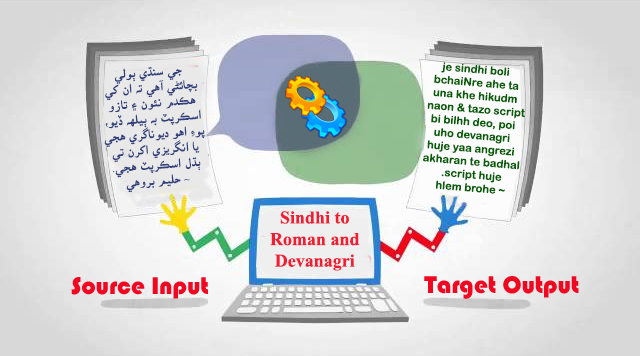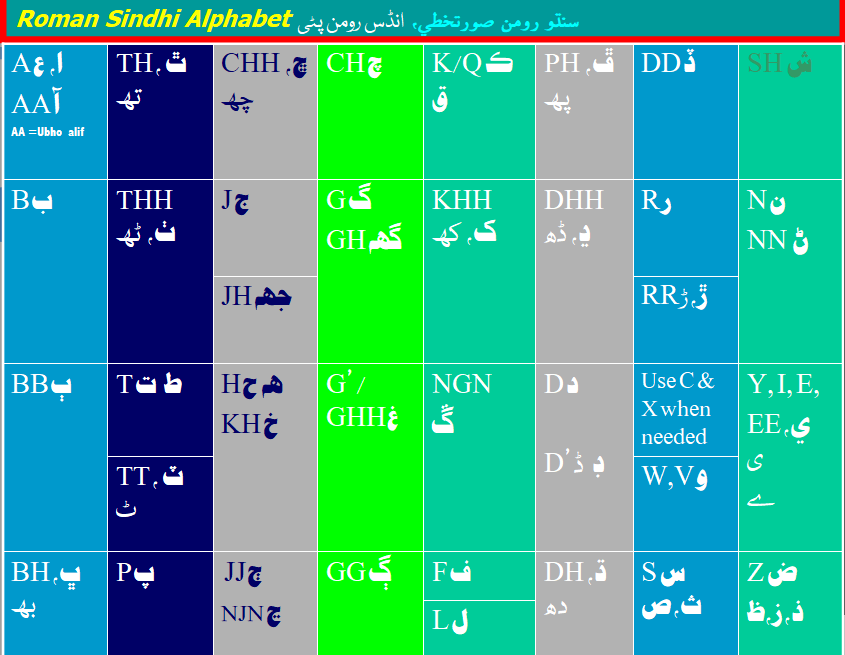
While Roman Sindhi offers practical benefits for online communication, it also raises concerns about the potential decline of the traditional Arabic Sindhi script
Bakhtyaar Shahzad
From the moment of its inception, human language, perhaps the most immediate creation of mankind, has played an unparalleled role in distinguishing our species from other mammals. Renowned anthropologist Yuval Noah Harrari posits that human evolution remains profoundly dependent on language. Shared knowledge and discovery fuel the progress of our world. Artists and scientists, when exposed to the marvels of nature, share their findings, initiating chains of discovery, investigation, and affirmation that propel human civilization. At any stage of this process, the absence of language would render further advancement and knowledge sharing impossible. Therefore, the development of language stands as a core aspect of human evolution and civilization.
Revisiting Darwin’s notions of ‘survival of the fittest’ and ‘natural selection,’ we conclude that evolution, including linguistic evolution, is not a designed or controlled process; rather, it’s shaped by available options and circumstances. The preservation or promotion of a language is not determined by individual groups or speech communities but rather by dominating factors such as social necessity, a language’s fitness, and, crucially, the power and identity dynamics within linguistic groups. These factors ultimately decide whether a language thrives or faces extinction.
Languages survive when they adapt to modern standards, open themselves to absorption and evolution
But what defines a “fit” language? Is it a language with a rich lexicon or one that adheres to grammatical correctness? Is it a dominant language or a vernacular spoken by the majority? Does it boast an extensive literary tradition or just official documentation? These questions fuel debates in linguistics and anthropology. However, these debates, whether fruitful or futile, fail to provide satisfactory control mechanisms for the evolution of human language. It’s a complex interplay of factors that drives language evolution.
If factors such as grammatical accuracy, literature, power, or mass adoption held significant weight, languages like Sanskrit, Latin, or Hebrew would not have faced extinction, although Hebrew has experienced a resurgence. Reflecting on the majestic grammars and literatures of these languages, one might wonder how such “fit” languages became extinct while their contemporaries progressed.

Should we assert that language development has a predetermined limit in performance and perfection, following a linear evolutionary path, emerging, transforming, and reaching a plateau before fading away? Or do speech communities undergo identity transformations? The former case makes it challenging to understand the revival of Hebrew, while the latter, though more reasonable, remains a debated perspective. Whatever the causes, they represent a complex reality for linguists to explore and agree upon. In this perplexity, few facts about language have become established.
Evolution, including linguistic evolution, is not a designed or controlled process
Firstly, languages survive when they adapt to modern standards, open themselves to absorption and evolution. The prescriptive grammarian narrative, attempting to restrict language lexically and grammatically, only contributes to a language’s decline, as seen in the cases of Sanskrit and Latin. Secondly, a language must transform and evolve to fit into society while retaining its distinctive characteristics to preserve its independence, as exemplified by Urdu during the Mughal reign in India. Urdu showcased remarkable adaptability in lexicon, grammar, script, poetry, and literature, drawing from Persian, Arabic, Turkish, and Hindi, while maintaining its independence.
Language evolution often begins with changes in vocabulary, with more loanwords from surrounding languages being added. Scriptural changes, idioms, expressions, and even foreign scripts follow suit. Phonemic transformation usually accompanies these shifts. Importantly, the direction of this evolution is never predetermined, remaining abstract and unpredictable in terms of a language’s fate. Success or threat stemming from such adaptations cannot be definitively determined.
Roman Sindhi is a writing system and script used to represent the Sindhi language in the Roman alphabet, which is the same script used for English. This script is primarily used in informal written communication, particularly online and among younger generations. One of the main reasons for the adoption of Roman Sindhi is its ease of use, especially in the digital age. Younger generations who are accustomed to typing in Roman characters on computers and mobile devices find it more convenient for texting, chatting, and using social media.
Language evolution often begins with changes in vocabulary, with more loanwords from surrounding languages
Considering scientific theories of language change and evolution, one of the current concerns revolves around the Sindh script. Presently, Sindhi language is primarily dominated by literary groups and instructors with limited linguistic understanding. These groups, while rendering a valuable service to the community, fail to acknowledge that the mass adoption of Roman Sindhi is displacing the traditional Sindhi Arabic script, even as traditional Sindhi authors and institutions continue to advocate for its use. This shift is particularly pronounced among the younger generation (aged 15-35).
During my interviews across Sindh (involving 200 participants across 13 districts), it was found that a vast majority (95%) do not use the Sindhi keyboard for typing Sindhi, with the 5% who do consisting mainly of political activists using it to engage illiterate populations but relying on Roman Sindhi for personal communication. This situation is alarming, given the prevalence of Roman Sindhi among the current generation, especially in an era of AI and technological development.

The absence of an alternative script could exacerbate the challenge of preserving written Sindhi
As technology continues to advance, the script used for a language can significantly affect its survival. Roman Sindhi’s compatibility with digital platforms and modern technology plays a role in its growing popularity. While Roman Sindhi offers practical benefits for online communication, it also raises concerns about the potential decline of the traditional Arabic Sindhi script. The loss of a script can affect the preservation of written Sindhi and its cultural heritage. Moreover, As an Anthropologist, I am interested in analyzing its impact on the identity of the Sindhi community. The increasing use of Roman Sindhi raises questions about language identity and cultural preservation. Language is not just a means of communication; it’s also a vital aspect of cultural identity. The shift to Roman Sindhi can potentially impact the perception of Sindhi identity.
Also read: Roman Sindhi Alphabet
Even though the Romanization of Sindhi script will impact the identity formation of Sindhi population, it will definitely prove conducive to the fitness of Sindhi language for survival in the next century. Even now, the prevalence of Roman Sindhi script is rampant and uncontrolled. This scenario underscores the scientific theories discussed in this article regarding language change and the influence of power institutions. When examining the linguistic landscape of Sindhi language in our times, Anthropologists argue that provisions for Roman Sindhi are essential for the survival of written Sindhi. Despite efforts by power institutions and language prescribers to maintain the Arabic Sindhi script, the mass adoption of Roman Sindhi is gaining ground, particularly among the youth. An acceptance of this scientific and evolutionary principle of language change by the speech community and its recognition can best safeguard the status of Sindhi language as a written language in the scientific revolution.
As we anticipate further technological development in the coming decade, the decline of Arabic Sindhi is likely to be even more pronounced. At that point, the absence of an alternative script could exacerbate the challenge of preserving written Sindhi. Sindhi users may actively utilize Urdu or English for online communication. We must also remember that the reading tradition of literature is being replaced by audio visual multimedia; an arena in which Sindhi has least invested, narrowing the channels for utility of Arabic Sindhi script. This situation serves as a clarion call to Linguistic Anthropologists to seriously consider the case of Roman Sindhi script.
Read More: SCRIPT FOR SURVIVAL: THE CASE OF INDIAN SINDHI
________________
Bakhtyaar Shahzad Panwhar is Linguistic Anthropologist. He is fluent in Sindhi, English, Urdu, Siraiki, Punjabi, Gujarati, Kutchi, Marathi, Bangla, Persian, Arabic, Hindi, Dhatki, Kohli Parkari (semi fluent in Spanish and Hebrew). He did BS Anthropology- Dec, 2022 from University of Sindh. His areas of interest are Anthropology, Sociolinguistics, Phonology, Historical and Comparative Linguistics, Culture. He can be accessed at Email: bakhtyaarshahzad@gmail.com